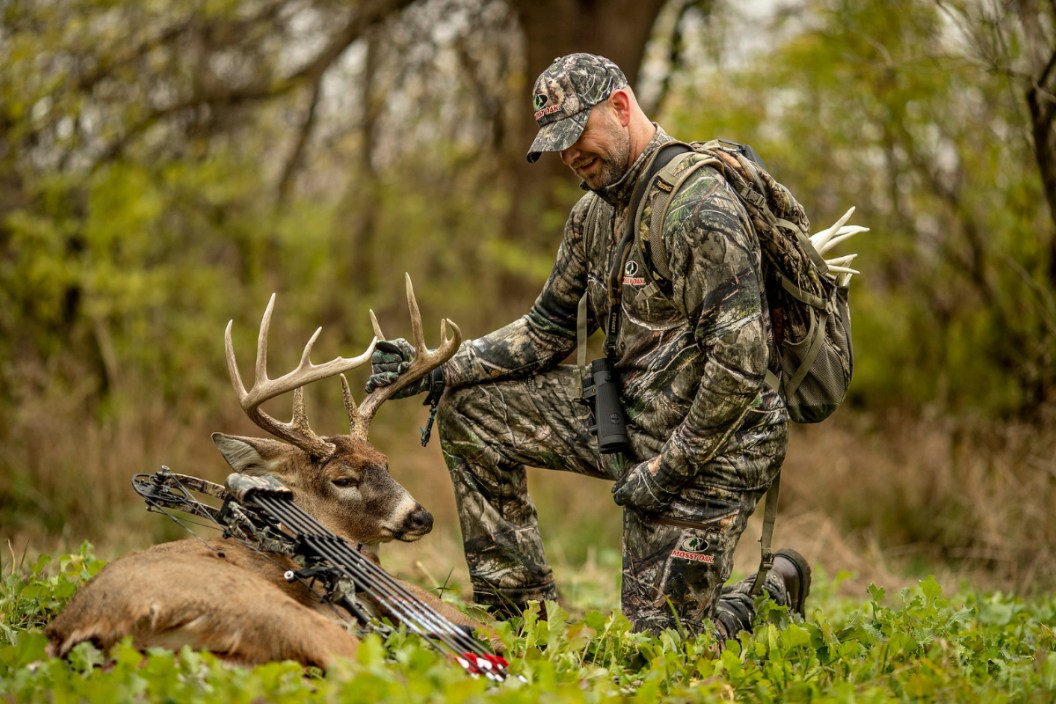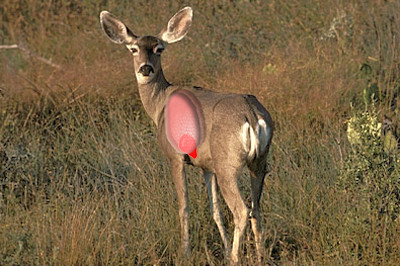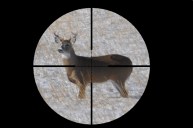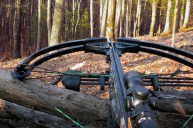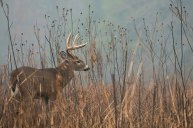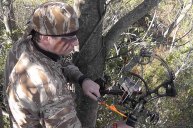These places on a deer are key to shot placement while deer hunting with archery equipment.
Probably the number one question most new hunters have is where they should shoot a mule or whitetail deer's body to make a humane kill. It is a good question to have because we should all strive for the most ethical shot possible in each situation.
With a firearm, you can get away with a few more shot angles on a deer's vitals than you can while bowhunting. That is what we are focusing on today, aiming points while using archery gear.
Whether you are using the latest in compound and crossbow technology, or a throwback recurve or longbow, these are things to think about when you line up that shot. Because it is easier to make a non-fatal hit, and a lot of suffering for a wounded deer with an arrow than is a bullet. By studying deer anatomy and shot placement closely, you can reduce the chances of that happening significantly.
Anatomy of a deer.
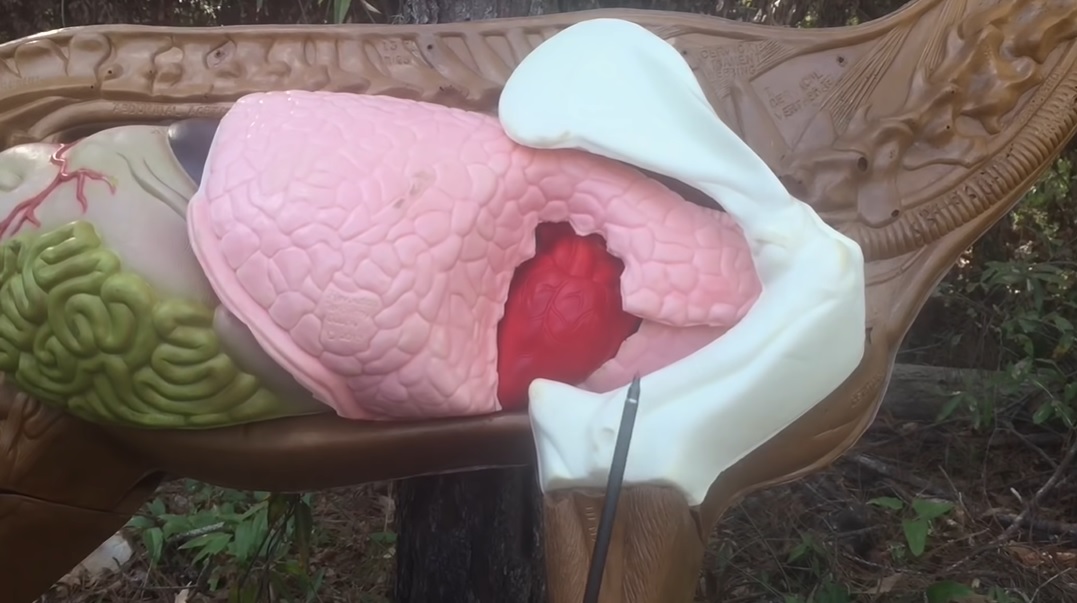
YouTube: National Deer Association
Before we even talk where to shoot, let us discuss deer anatomy. The above screenshot of a 3D target gives a good idea of where everything is located. Almost all the vital organs are in the chest cavity behind the front leg. Note that dark red area just above and back from the bottom of the brisket where the deer's leg meets its body. That is the heart. The pink area all around it indicates the lungs.
As you move to the tail of the animal, note that smooth grey area between the lungs and the green portion indicating the stomach. That is approximately where the liver is located. A shot here will still kill the deer, although it might take a little longer. Expect to let the deer lay a lot longer before expiring with a shot in this area. Anything in that green and grey area behind that is no-man's land. A shot there can kill a deer, but you run the chance of spoiling the meat. Also, it is likely to be a long painful death. I have heard of whitetails taking six hours or more to die from a gut shot.
The key thing to take away from the deer's anatomy is that white portion near the front of the animal. That is the deer's shoulder blade. While a bullet can puncture the front shoulder leg bone most of the time, an arrow usually cannot. More than one bowhunter has been denied a kill because their arrow hit this area and bounced harmlessly off. You must keep the shoulder blade in mind while sighting down a shot with any compound bow or even a crossbow. As powerful as modern crossbows are, and even though the penetrating power of broadheads has greatly improved the last 30 years, your odds of a pass through are extremely slim if you strike this hard, tough bone. That applies to any big game animal, not just deer.
Where do you shoot a deer with an arrow?
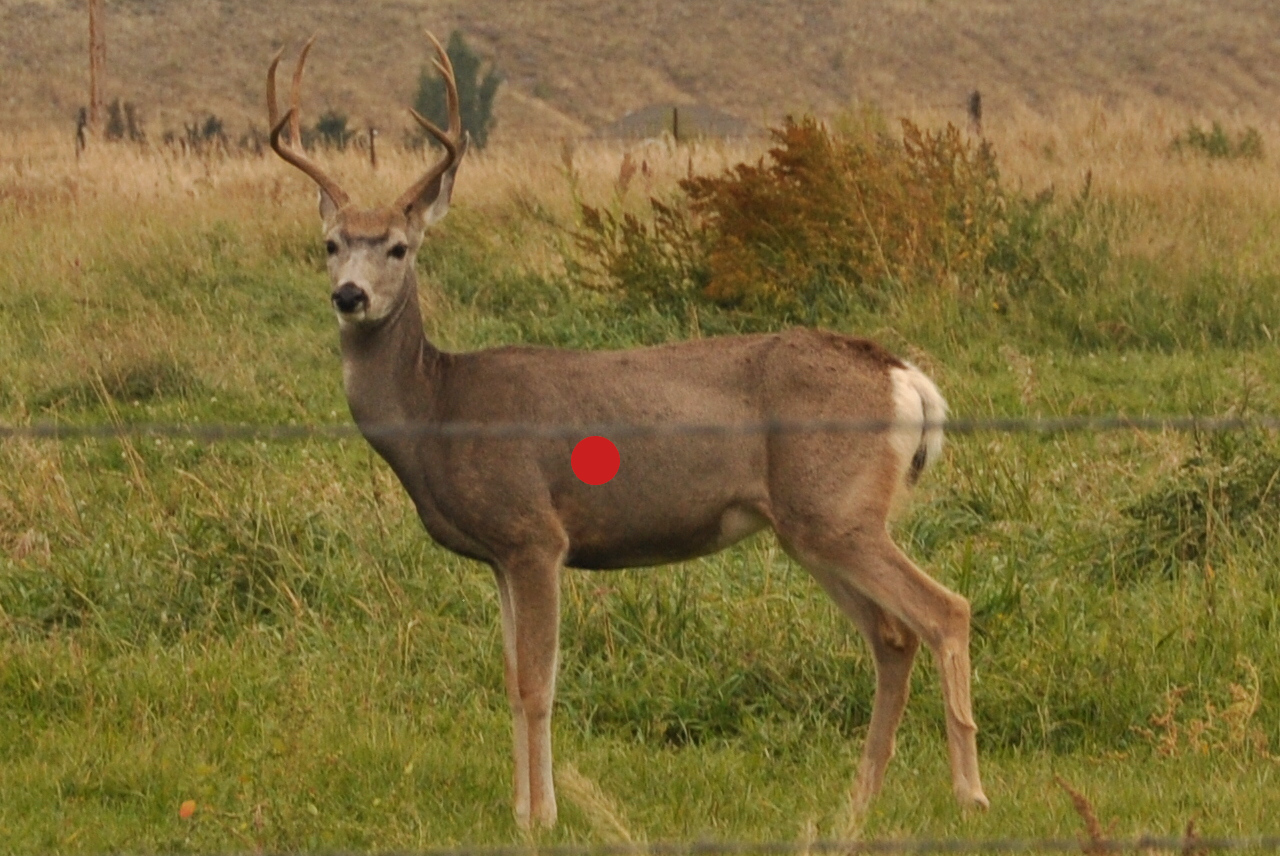
Travis Smola
This is going to vary greatly depending on the type of angle the deer is giving you. However, for this first one, we will assume a broadside shot. This what you want every time ideally. Mainly because on a quartering away shot or any other angle, it gets harder to make an ethical kill because the vitals may present too small a target. With a broadside deer, you are getting the largest target area possible. Your odds of a heart shot or a lung shot are high. Even better is a double lung. Hitting either or both vital areas will result in an ethical kill and minimal loss of venison.
The image above shows a good shot placement for this scenario. Ideally you want to aim a little further back than you might with a rifle. Just because you want to avoid that front shoulder. This leaves a little more room for error if you shot goes a little wider than that in either direction. We know nerves can get to anyone once you are at full draw and the precision shots you were making in practice may not be as dead on in the field. Especially when it is a big buck you are aiming at.
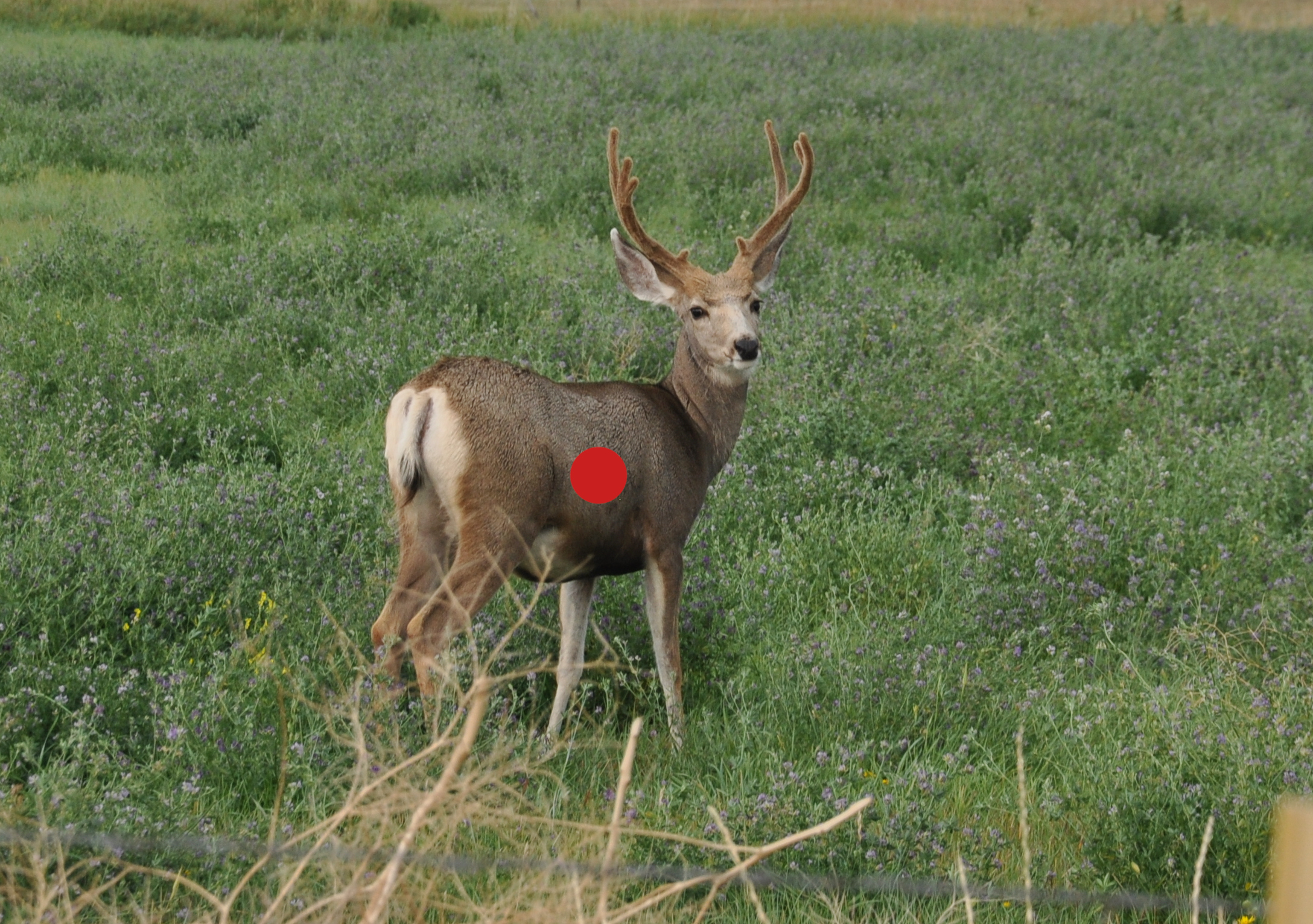
Travis Smola
We are also including an image of where to shoot on a quartering away shot. For some hunters, this has become their preference, especially from a treestand. Mostly because at the right angle, you can take the possibility of striking a rib out of the equation and tear up both lungs, resulting in an extremely quick kill. My uncle nailed a nice 9-point with a shot like this using his crossbow a few years back and even though the hole looked far back on the body, because of the angle, the bolt took out all the vitals and made a huge exit wound. The buck went 30 yards and flopped over dead ten yards from a field edge. Recoveries do not get much easier than that!
The only thing to keep in mind is that the target area gets a little narrower because your angle to the vitals is different. The image above from the Texas Parks and Wildlife Department does a good job of displaying that. In some cases, you might want to adjust your aim a little further back just to get that proper angle into the lungs.
Whether this is a better shot than a broadside one is up for debate. Personally, we still think broadside is the best shot to take. However, deer shot with a perfect bull's eye from either of these angles are likely not going very far. And they will probably leave a massive blood trail when you nail that shot.
Shots to avoid with an arrow or bolt.
We did want to take one moment to mention there are some shots you should probably never take with archery gear. First off, do not even consider a head shot. It is unethical and it likely will not kill the animal. Quartering towards or straight on shots are doable with firearms, but with an arrow or bolt, you need to hit an extremely small target for a killing shot and most hunters do not have the skill or experience to pull that kind of precision off. The problems with the shoulder blade, and ribs are compounded at these angles because they will shield off the vitals extremely well.
The other downside is even if you do nail a killing shot at an angle like that, the deer will likely run a lot further and you will suffer greater meat loss than you would the other angles we talked about here today.
Remember that in gun hunting, shock and the power of the gun are a large part of what kills the animal. No matter what type of arrows and broadheads you are using, the goal is to kill the animal through both external blood loss and internal hemorrhaging. The lungs and heart give you the best chance to do just that.
It is helpful to keep in mind one aspect of gun hunting. "Aim small, miss small." This same principle works for bowhunting too. Once you decide to take an animal, focus only on the body and that one target area you want to hit. Put this idea into practice before the season and odds are, you will make the shot and have a successful bowhunt this year!
Products featured on Wide Open Spaces are independently selected by our editors. However, when you buy something through our links, we may earn a commission.
For more outdoor content from Travis Smola, be sure to follow him on Twitter and check out his Geocaching and Outdoors with Travis YouTube channels.
NEXT: THE AXIS DEER AND HOW THEY'RE IMPACTING PARTS OF THE UNITED STATES
WATCH
